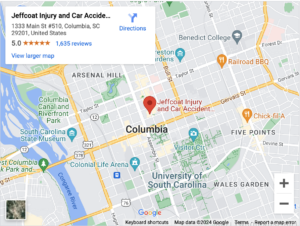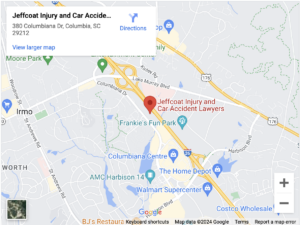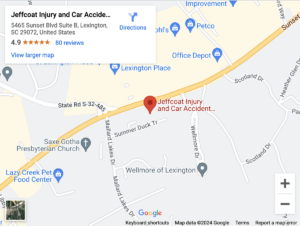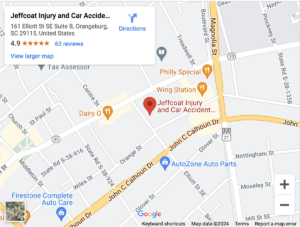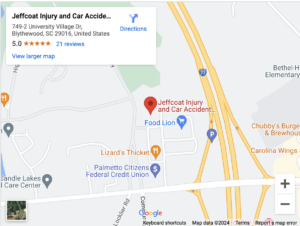October 9, 2025 | Uncategorized

When Multiple Parties Share Blame for Your Injuries
If you’ve been injured in an accident involving multiple parties—perhaps a multi-vehicle collision on I-26 or a slip and fall at a business where both the property owner and maintenance company share responsibility—you’re likely wondering how to recover fair compensation when several parties contributed to your harm. The legal concept of joint and several liability has traditionally allowed injured victims to collect their full damages from any single at-fault party, even if that party was only partially responsible. However, significant changes to South Carolina law in 2025 have transformed how courts handle cases with multiple defendants, potentially affecting your ability to recover compensation.
💡 Pro Tip: Document all parties potentially involved in your injury immediately after the incident, including witnesses who can verify each party’s role. This information becomes crucial when determining fault percentages under South Carolina’s new liability rules.
Choosing the right legal representation is crucial when dealing with the complexities of multi-defendant cases. Let the skilled team at Jeffcoat Injury and Car Accident Lawyers help you navigate these challenging waters and maximize your recovery. For personalized assistance, reach out today at (803) 200-2000 or simply contact us.
Understanding Your Rights Under South Carolina’s New Liability Laws
Joint and several liability fundamentally changes how you can pursue compensation when multiple parties caused your injuries. Under this legal doctrine, each at-fault defendant can be held individually responsible for your entire damages amount, regardless of their specific percentage of fault. This protection exists because lawmakers recognized that injured victims shouldn’t bear the financial burden simply because one defendant lacks insurance or assets to pay their share. A personal injury lawyer in South Carolina can help you understand how this doctrine applies to your specific case and which defendants might be held liable for your damages.
Governor Henry McMaster’s signing of H. 3430 on May 28, 2025, marked a turning point for South Carolina tort law. Under the previous system, any defendant found even 1% at fault could potentially be required to pay 100% of your damages. The new law, which takes effect July 1, 2026, significantly limits this protection by establishing a 50% fault threshold. Defendants whose conduct is determined to be less than fifty percent of the total fault will only be liable for their proportionate share of damages. This shift means that working with a personal injury lawyer in South Carolina becomes even more critical to ensure proper fault allocation and maximize your recovery options.
💡 Pro Tip: Keep detailed records of how each party’s actions contributed to your injury. Under the new law, proving that a defendant is 50% or more at fault becomes crucial for holding them jointly and severally liable for your full damages.
What to Expect in Multi-Defendant Injury Cases
Pursuing compensation in cases involving multiple defendants follows a more complex timeline than typical injury claims. Understanding each phase helps you prepare for the journey ahead while ensuring you meet critical deadlines. The process becomes particularly intricate when dealing with the South Carolina Contribution Among Tortfeasors Act, which governs how defendants can seek reimbursement from each other after paying more than their fair share.
- Initial investigation phase (30-60 days): Your attorney identifies all potentially liable parties and gathers evidence showing each party’s role in causing your injuries
- Formal discovery period (6-12 months): Through depositions and document requests, fault percentages begin emerging as each defendant tries to shift blame to others
- Nonparty designation deadline: Defendants must identify any additional parties they believe share fault but aren’t named in the lawsuit—a crucial new element under South Carolina’s 2025 reforms
- Pretrial motions and negotiations: Insurance companies for each defendant negotiate based on their exposure under the 50% rule, often leading to partial settlements
- Trial and verdict allocation: The jury assigns specific fault percentages to each party, determining whether joint and several liability applies to each defendant
💡 Pro Tip: South Carolina’s statute of limitations for personal injury claims is three years, but evidence supporting fault allocation deteriorates quickly. Starting your case within the first few months dramatically improves your attorney’s ability to prove which defendants meet the 50% threshold.
Maximizing Your Recovery with Strategic Legal Representation
Successfully navigating South Carolina’s modified joint and several liability system requires sophisticated legal strategy and thorough case preparation. The stakes are particularly high because failing to prove a defendant is 50% or more at fault could leave you unable to collect full compensation if other defendants lack sufficient assets or insurance coverage. This is where the experience of firms like Jeffcoat Injury and Car Accident Lawyers becomes invaluable—attorneys who understand both the traditional principles and the nuances of the 2025 reforms can strategically structure your case to maximize recovery opportunities. A skilled personal injury lawyer in South Carolina will work to identify the most culpable defendants and build compelling evidence demonstrating their majority fault.
The new law also allows defendants to include nonparty-tortfeasors on verdict forms, meaning the jury can assign fault percentages to individuals or entities not even named in your lawsuit. This provision can significantly dilute the fault percentages assigned to named defendants, potentially dropping them below the crucial 50% threshold. Your attorney must anticipate this defense strategy and prepare comprehensive evidence showing why named defendants bear primary responsibility for your injuries.
💡 Pro Tip: Request that your attorney explain their strategy for preventing fault dilution through nonparty designations. Experienced firms often file strategic motions limiting which nonparties can appear on verdict forms, protecting your ability to hold primary defendants fully accountable.
Exceptions That Preserve Full Joint and Several Liability
While South Carolina’s new 50% rule significantly limits joint and several liability, important exceptions preserve your right to full recovery in certain circumstances. Section 15-38-15(F) specifically excludes defendants whose conduct is determined to be willful, wanton, reckless, grossly negligent, or intentional from the 50% threshold protection. Additionally, conduct involving the use, sale, or possession of alcohol or illegal drugs falls outside the new limitations. These exceptions recognize that certain behaviors are so dangerous that defendants should remain fully accountable regardless of their fault percentage. A personal injury lawyer in South Carolina can evaluate whether your case involves conduct that triggers these important exceptions.
Drunk Driving and Intentional Misconduct Cases
DUI accidents represent the most common application of the intentional conduct exception. When a drunk driver causes a multi-vehicle collision, they remain jointly and severally liable for all damages even if their fault percentage falls below 50%. The same principle applies to assault cases, road rage incidents, and other intentional harmful acts. For businesses serving alcohol, the new law creates specific insurance requirements and training mandates, including mandatory completion of certified alcohol server training within 60 days of employment. Understanding how the South Carolina Joint and Several Liability Form 2024 applies to these exceptional circumstances helps victims pursue appropriate compensation despite the general limitations imposed by tort reform.
💡 Pro Tip: Always request blood alcohol testing and toxicology reports for all parties involved in your accident. Evidence of impairment not only strengthens your case but could exempt certain defendants from the 50% fault requirement entirely.
Impact on Insurance Coverage and Settlement Negotiations
The shift away from pure joint and several liability fundamentally alters how insurance companies approach multi-defendant cases in South Carolina. Under the old system, insurers for minimally at-fault defendants often faced pressure to settle for amounts far exceeding their insured’s actual responsibility, knowing they could be forced to pay the entire judgment. The new 50% threshold creates more predictable exposure for insurers, but it also complicates negotiations as each carrier fights to keep their insured’s fault percentage below the critical threshold. Working with a personal injury lawyer in South Carolina who understands these insurance dynamics ensures you don’t accept inadequate settlements based on artificial fault allocations.
Coordinating Multiple Insurance Policies
Modern injury cases often involve numerous insurance policies—auto liability, commercial general liability, umbrella coverage, and more. Each policy may have different limits, exclusions, and coverage triggers. The new law’s impact varies depending on policy language, particularly regarding how insurers handle contribution claims between co-defendants. Some policies specifically address joint and several liability scenarios, while others remain silent, creating coverage disputes that can delay your recovery. Your attorney must understand both the liability landscape and the insurance coverage puzzle to maximize available compensation sources.
💡 Pro Tip: Request copies of all potentially applicable insurance policies early in your case. Hidden exclusions or coverage limitations often surface only after careful policy review, and identifying these issues early allows your attorney to adjust strategy accordingly.
Frequently Asked Questions
Common Legal Concerns About Multiple Defendant Cases
Understanding how South Carolina’s joint and several liability rules affect your specific situation can feel overwhelming, especially when dealing with injuries and mounting medical bills. These frequently asked questions address the most common concerns we hear from injury victims navigating multi-party claims.
💡 Pro Tip: Write down specific questions about your case before meeting with an attorney. The more detailed information you can provide about each party’s involvement, the more accurate guidance you’ll receive about your recovery options.
Next Steps in Your Multi-Defendant Injury Claim
Taking prompt action protects your rights and preserves crucial evidence needed to establish fault percentages. Understanding the legal process ahead helps you make informed decisions while avoiding common pitfalls that could compromise your claim.
💡 Pro Tip: Create a timeline of events immediately after your injury, noting each party’s actions and any witnesses present. This contemporaneous record becomes invaluable evidence during fault allocation proceedings.
1. What happens if one defendant is found 60% at fault and another is 40% at fault under South Carolina Personal Injury laws?
Under South Carolina’s modified joint and several liability rules effective July 1, 2026, the defendant who is 60% at fault can be held responsible for your entire damages amount because they exceed the 50% threshold. The 40% defendant would only be liable for their proportionate share. However, if the 60% defendant pays your full damages, they can seek contribution from the 40% defendant through a separate legal action.
2. Can I still recover full compensation if multiple defendants in my South Carolina accident liability case are each less than 50% at fault?
Yes, but recovery becomes more challenging. You would need to pursue each defendant separately for their proportionate share of damages. If any defendant lacks sufficient insurance or assets to pay their portion, you may not recover that amount unless an exception applies, such as drunk driving or intentional conduct, which eliminates the 50% threshold requirement.
3. How do nonparty-tortfeasors affect my South Carolina injury compensation claim?
Defendants can now request that individuals or entities not named in your lawsuit be included on the verdict form for fault allocation. This strategy potentially reduces named defendants’ fault percentages below 50%, limiting their liability to only their proportionate share. Your attorney must present strong evidence showing why named defendants bear primary responsibility to combat this dilution tactic.
4. What’s the deadline for filing a personal injury lawsuit with multiple defendants in South Carolina?
South Carolina maintains a three-year statute of limitations for personal injury claims, regardless of the number of defendants involved. However, identifying all potentially liable parties and gathering evidence to establish fault percentages takes considerable time. Starting your case promptly ensures your attorney can thoroughly investigate before critical evidence disappears or witnesses’ memories fade.
5. Should I work with a South Carolina Personal Injury attorney if multiple parties caused my injuries?
Multi-defendant cases involve complex fault allocation issues, strategic decisions about which parties to sue, and sophisticated negotiations with multiple insurance companies. An experienced attorney can identify all potentially liable parties, build evidence supporting appropriate fault percentages, and navigate exceptions to the 50% rule that might apply to your case. Given the new law’s limitations on joint and several liability, professional legal representation becomes even more critical for maximizing your recovery.
Work with a Trusted Personal Injury Lawyer
The evolution of joint and several liability laws in South Carolina creates both challenges and opportunities for injury victims seeking fair compensation. Understanding these complex rules, their exceptions, and strategic implications requires in-depth knowledge of both traditional tort principles and recent legislative changes. Whether you’re dealing with a multi-vehicle accident, premises liability case involving multiple responsible parties, or any other injury scenario with shared fault, securing experienced legal representation protects your rights and maximizes recovery potential. South Carolina’s new 50% threshold rule makes early case evaluation and strategic planning more important than ever before.
If you’re navigating the maze of South Carolina’s evolving liability laws, let Jeffcoat Injury and Car Accident Lawyers guide you towards a brighter outcome. Don’t lose out on compensation; reach us at (803) 200-2000 or simply contact us to discuss your case today.


